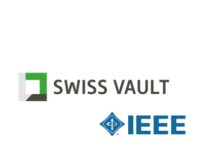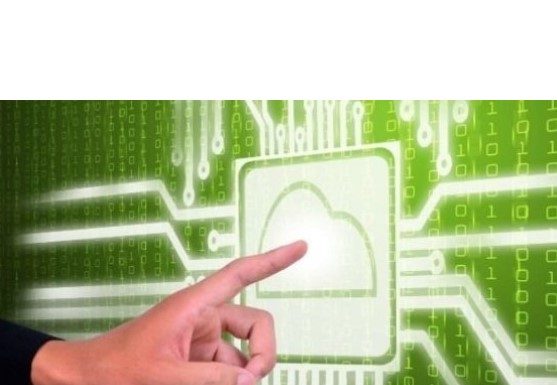InsightaaS has just released a new whitepaper, Key Attributes of Corporate Mobility Solutions, that uses results from a November survey of Canadian businesses to document the issues faced by corporate IT in deploying effective mobility solutions needed by staff — and in some cases, by customers — to increase business productivity and agility. The whitepaper also includes expert commentary on the networking and application development issues that need to be addressed in order to extend corporate resources to mobile users.
The research, conducted by California-based IT analyst firm Techaisle with business managers (BDMs) and IT managers (ITDMs) from 635 Canadian companies of all sizes, was designed to explore the critical links between technology frameworks and business benefit from both the IT and business executive perspectives. One section of the survey explored mobility, which can be a point of contention between business managers looking to have corporate resources available on corporate-owned and BYOD PCs, tablets and smartphones (and in some cases, on their customers’ devices), and IT managers, who wrestle with the strain that mobile solutions impose on the network, and who may have difficulty in allocating development resources to creating secure mobile extensions to current corporate systems and new mobile apps that perform optimally across the ‘three screens’ of laptops, tablets and notebooks.
The research found that most organizations consider seamless delivery of information to the ‘three screens’ to be the most important attribute of an effective mobility solution. Integration of mobility with existing corporate systems — including instant updating for remote users — and support for all models of endpoint devices regardless of ownership (corporate, employee, customer or supplier) were cited as key attributes by nearly half of the respondents. Other top-five solution attributes identified in the survey included the ability to integrate multiple media types (pictures, video, text, etc.) into outbound communications, and the ability to read or write data from corporate systems.

Deeper analysis of these results finds distinct differences in the requirements of BDMs and ITDMs, and in the perspectives of small businesses and larger enterprises. Integration with corporate systems, for example, is a ‘big company’ issue, of much less importance to SMBs. The ability to serve information to all models of smartphones regardless of ownership is of keen interest to BDMs, and less of a success benchmark for IT. ITDMs, on the other hand, are more likely to consider the ability to integrate multiple media types in outbound communications to be a critical design point than are their BDM colleagues. The Techaisle survey finds that only the ability to deliver information seamlessly to the ‘three screens’ is of roughly equal — and substantial — interest to ITDMs and BDMs across small, mid-sized and enterprise-scale organizations.
The Key Attributes of Corporate Mobility Solutions whitepaper uses these distinctions to plot key mobility attributes across ITDMs and BDMs, and across e-sizes, and delves into the strategic implications of the differences. In the section entitled “what does this mean to mobility strategy?” the whitepaper notes that the five key attributes highlighted by the survey “correspond to five different starting points. Most organizations will need to address most or all of these issues, but each organization can select its starting point and evolution path based on a combination of its corporate needs, and the extent to which the solution is being driven by BDMs or ITDMs.” The paper then discusses some of the factors that will influence the evolution of mobility solutions in different corporate contexts.
In the end, the research concludes that “Mobility solutions in a corporate context start with the network and its resources — corporate applications and data, and the networks that provide secure, managed connections between the endpoint devices and the corporate application and data resources — and work outward to the endpoints.” The paper states that “it is important to recognize that the mobility journey will require ITDMs and BDMs to work together to identify and address all of the key attributes required by a specific organization,” and to use this understanding to structure a network-out approach to effective mobility solution development and deployment.
Assessing the underlying technology requirements
To add technical depth and context to the Viewpoint’s market analysis, InsightaaS engaged in a Q&A with two HP experts: Steve Brar, Global Product Marketing Manager for HP Networking, and Paul Ashwood, Worldwide Portfolio Marketing Manager, Mobile Applications Services, HP Enterprise Services. The Q&A (which can be seen in its entirety here) provides a detailed perspective on the networking and application development issues that need to be addressed in order to extend corporate resources to mobile users. Here is a sample of the Q&A, addressing three of the key issues highlighted in the Techaisle research:
InsightaaS: What are the system-level complexities involved in supporting system access from multiple devices that are owned by employees, customers and suppliers, in addition to the business itself?
Brar: Mobility has two key aspects, the device and the user. From a device perspective, ensuring the integrity of the device, the operating system, and the hardware type are all key pieces of information used by an IT administrator for policy definition. The other aspect is who the user is and what their specific policy should be (e.g., employee, guest, etc.). All of these varying requirements can make it very complex to implement a network that can support a multitude of devices and users while maintaining consistent performance and security.
HP’s IMC platform has integrated device fingerprinting, user access manager, and bring-your-own-device support all through a single pane-of-glass. IMC provides onboarding, provisioning and monitoring of devices and can apply the right policy as defined by the IT department for any user type, any device and from any location, ensuring the best possible user experience that is secure and reliable. In addition, IMC can check the health of end-user devices with a local client.
InsightaaS; What are the keys to providing real-time updates/synchronization between central systems and remote mobile workers?
Brar: From a network perspective, a well-designed network with lower latency and WAN optimization will handle any type of real-time update/sync between a virtualized client or managed mobile device and central systems.
Ashwood: From a mobile apps development perspective, it’s essential to consider timing of updates/sync and the network options (and data plans) the user is operating on. You don’t want to push a 150Mb app update to a user over a 3G network with a weak signal in the middle of their work day — you will want to wait until they are at home on their Wi-Fi network and schedule the update to run at night while they are asleep.
InsightaaS: What do organizations need to consider, when creating an approach that enables remote endpoint devices to read from/write to corporate systems?
Ashwood: It’s important to consider the following:
- Middleware services (and an API gateway) to connect (and manage) the front end mobile apps connecting to the back end enterprise systems
- Offline versus online mode: don’t always assume users are connected — they may want to take orders in an offline mode, then sync the orders to the back end system later when they are connected
- Performance of the end to end solution (especially considering different locations / countries on a global deployment)…also, the ability to monitor that performance and diagnose performance problems.
- Security of the device and the app: can I exploit the app to access enterprise data I am not supposed to see? Organizations need to deploy secure containers on devices, app security scans of the apps, ensure that they have remote wipe capability, and provide encryption of the data both at rest (on the device) and in transit (over the network).
To access the whitepaper, click here, or visit www.insightaas.com/MobilityAttributesWP. To access the Q&A transcript, click here, or visit www.insightaas.com/ViewpointQandA-Mobility. Both documents are available for free download, with no registration required.









This blog is awesome, I like this post. It’s really a great and helpful piece of info. I am glad that you shared this helpful info with us. You can also visit Mobility Solutions san diego for mobility solution.